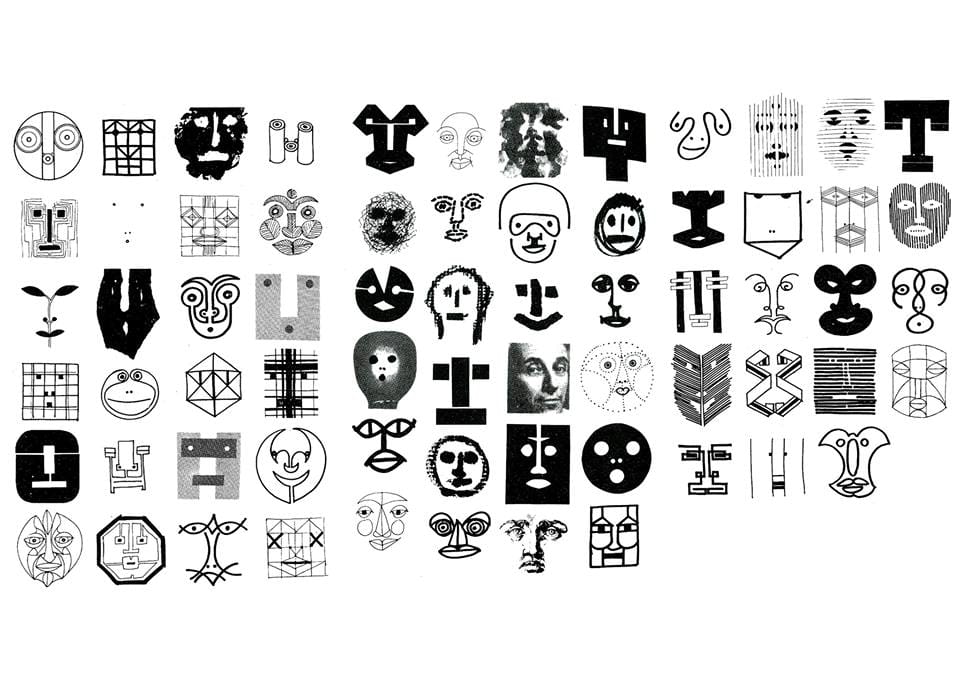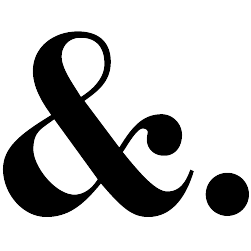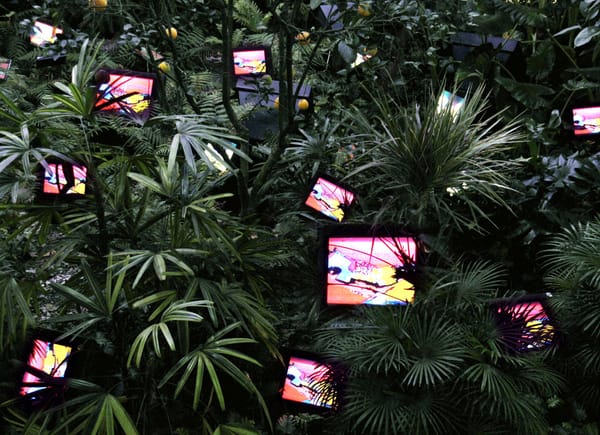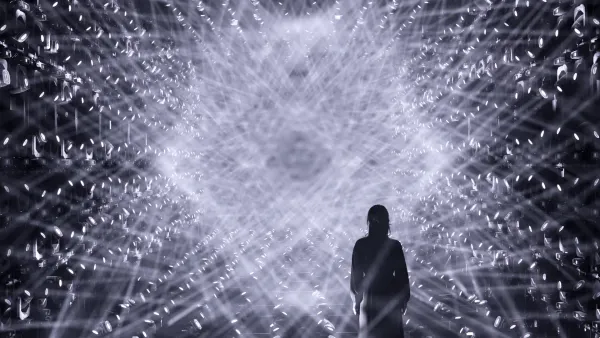Design
Design is one of those ubiquitous words in our culture which mean different things to different people. So let us explore it a little.

When people ask me the standard question: what do you do? I find it hard to give a straight answer. I do strategy, design, writing, producing... which do I pick? Let me start with Design. I studied and practised graphic design. It is integral to what I do, yet I don’t identify as a designer, not in a literal sense. Design is one of those ubiquitous words in our culture which mean different things to different people. So let us explore it a little.
When I think about design, mostly I don't think about the craft, even less a style. I think of it as an approach and a mindset. Design requires making choices — reducing, simplifying, and eliminating what is not necessary. Before the design process can begin, we must explore, define, and describe the universe we are designing for.
Designers imagine and craft towards a future state. Bruno Munari, one of the most inspiring people I had the good fortune to meet,[1] captured the essence of what designers do when he wrote: A Designer is a planner with an aesthetic sense.[2]
The word "design" doesn't have a direct equivalent in Italian. Disegnare means "to draw". Before adopting the now ubiquitous English term, we used the verb progettare, which means to design: to imagine and plan something into existence.
Progettare (pro·get·tà·re) — v.tr. (progètto, ecc.):
Ideare una costruzione, un’opera, ecc., eseguendo i disegni, i calcoli, gli studi necessari alla sua realizzazione.
Ideare (to ideate) is to imagine, conceive, and generate ideas. To draw, to calculate... in a word, to design. Interestingly the etymology of progettare — to project — comes from latin: projectare = 'to throw forward'. In other words, to envision. Munari's definition underlines the multidisciplinary nature of design.
Multidisciplinary Design
In one of the first books that inspired my professional choices, Roberto Pieraccini, who was head of visual design at (Italian technology company) Olivetti, reflects on the role of a communication designer:
I have the opportunity to talk about our profession, about that profession that I consider to be undefined and undefinable, which is Communication Design. [...] It is not definable, because the type of professionalism required of the operator depends on knowledge of not one but multiple subjects, analytical and operational skills. [...] Each field of intervention has its specificity, history, and methodology, and this is the main quality of our profession today: the ability to control and determine the bases, the fundamental structures of information with political, psychological, and aesthetic choices [...] to be therefore an operator capable of dealing with diversified interventions at the same time.[3]
Rediscovering these words now is remarkable. Pieraccini recognizes the multidisciplinary nature of the profession, crossing boundaries between strategy and creativity, research and craft, art and science, psychology and aesthetics. While all disciplines require focus and dedication — specialisation — dealing with complex problems also requires working across them at a certain depth.
Expert Generalists
Following unorthodox, non-linear professional development pathways, some of us might have developed into what philosopher Jonathan Rawson calls expert generalists. This concept describes someone who develops deep knowledge in one specific area and then uses that expertise as a foundation to make connections across other domains. This approach allows for a more holistic understanding of complex issues and an improved ability to navigate uncertainty.
The idea of an expert generalist is paradoxical but not oxymoronic. In theory, our very best philosophers, civil servants, political leaders, and writers are expert generalists – their defining skill is inclusive synthesis and their defining qualities are epistemic acumen and agility: know-how with knowledge, having enough expertise in one domain to value different forms of understanding, and knowing how to integrate them while retaining curiosity towards whatever which remains unfamiliar.[4]
Communication design, in the broader sense articulated by Pieraccini above, also requires epistemic acumen and agility (the ability to learn and move quickly between disciplines), and crucially, a capacity for inclusive synthesis through words and symbols.
Embracing Complexity
The multifaceted nature of our work — as designers, writers, researchers, advertisers, communication professionals — mirrors the complexity of our reality. Some of us are more specialised, while others are more generalist in our approach. We collaborate to create artefacts — brands, icons, stories — that epitomise complex entities through more manageable symbolic forms.[5]
Through research and strategy we look for opportunities, in the context of a particular situation, to isolate the most relevant aspects that can be synthesised into a manageable form. We aim to limit the spread and breadth of the world at hand to its essence, establishing a precise scenario which allows the design process to be effective. The goal is to find the truth at the heart of that world. Design's task is to bring that truth into the realm of human experience, to give it form. The Swedish word for designer is Formgivare, or "form-giver".
Again, I'm thinking about design in general terms rather than in a specific medium or application. Dieter Rams' 10 principles of Good Design were developed in a product design context, but they are equally applicable to graphic design, architecture, and many other areas.
The 6th principle is about truth:
Good design is honest. It does not make a product more innovative, powerful or valuable than it really is. It does not attempt to manipulate the consumer with promises that cannot be kept.
The 10th principle sums up Rams' overall design ethos:
Good design is as little design as possible. Less, but better — because it concentrates on the essential aspects, and the products are not burdened with non-essentials.
I fully subscribe to less but better. I am also aware that it represents a modernist perspective. "Less is more," as Mies van der Rohe famously said. A rallying cry for clarity and simplicity, focusing attention on what is essential.
The postmodern critique, articulated by Robert Venturi, countered that "less is a bore". Venturi advocated for embracing diversity, complexity, and contradiction in design. For postmodern thinkers, truth is relative because it depends on cultural, historical, and social context. The world is wildly complex, and a minimalist approach risks flattening it.
While I love minimalism and essentialism (I also struggle to recall any post-modern design masterpieces), this observation is helpful. There's a baby in the bathwater. We should eliminate the superfluous but also avoid inadvertently losing something essential in the process. We should strive to be "as simple as possible but not simpler."[6]
The enemy of simple is complicated, not complex. Complexity is a mountain we must climb, for its essence may be found at the summit, not by walking around it. As designers, we need to embrace and navigate this complexity, so we can understand it deeply and produce an inclusive synthesis that will help others navigate it too.
Bruno Munari was one of a handful of Italian luminaries who taught at Eidos, a multidisciplinary design school I attended in Milan in the 1980s. ↩︎
Bruno Munari, Design as Art ↩︎
Grafica: La Cultura del Progetto (Graphics: Design Culture). Quaderni AIAP, Anno VI, n. 13/14, 1989. (My translation). ↩︎
From Jonathan Rowson, Perspectiva in 10 premises — premise 6: "the method is education, but not as we know it". I shall reflect more about education and the need for expert generalists in upcoming posts. ↩︎
Adam Arvidsson and Thomas Björkman use the term "Symbol Creators" in their work. I shall exploring its meaning further in a future post. ↩︎
Aphorism attributed to Einstein ↩︎




